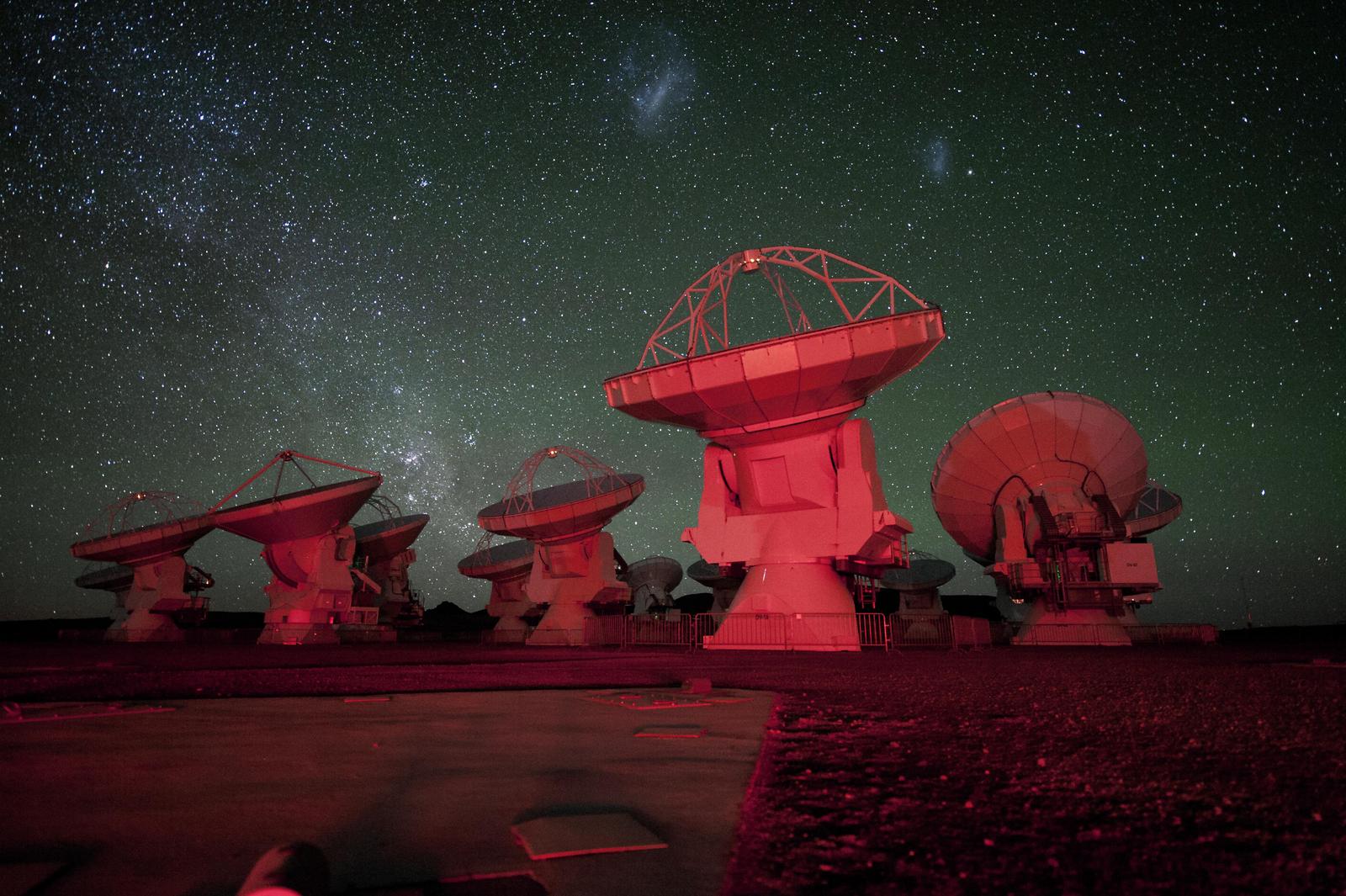Giant Radio Telescope to See Alien Planet Birth in HD

The world's most powerful radio telescope will pull back the curtain on the dusty veil obscuring planet birth, according to its backers.
For the past two years, scientists have been adding antennas — and resolution — to the Atacama Large Millimeter/submillimeter Array, which is officially inaugurated next week.
The array isn't fully open for business yet, but already it is producing groundbreaking science in alien worlds. Last year, it unveiled protoplanetary dust circling a brown dwarf or "failed" star. ALMA also measured planets orbiting the star Fomalhaut and found they were smaller than previously thought.
When all 66 of ALMA radio telescope antennas are ready, astronomers are preparing for a bonanza of discovery. Using the submillimeter wavelength — shorter than radio waves, but longer than visible light — permits astronomers to look at the cold dust surrounding young stars, and watch planets come together.
Scientists could detect the effects of young planets as small as the Earth's mass, said James Ulvestad, director of the National Science Foundation's astronomical sciences division, during a news conference Tuesday (March 5). [Amazing Photos by ALMA Giant Radio Telescope]
"ALMA already has seen dust rings around stars that are very narrow, and by modeling ... you can infer the dust ring has planets inside and outside the ring," he said.
"Even though you can’t see the planet, you can see the effects of the planet. That would be the predominant way that ALMA will study extrasolar planets."
Get the Space.com Newsletter
Breaking space news, the latest updates on rocket launches, skywatching events and more!
Star birth obscured
Telescopes usually track down exoplanets through two methods: the gravitational wobbles a star experiences as planets whip around it, or changes in brightness when a planet passes directly in front of its host star.
We've found thousands of planet candidates that way since the first was discovered in 1995. The planet-probing Kepler space telescope alone listed 2,740 candidates as of January. Scientists found Jupiter-size exoplanets in the early years, but with experience they've now seen alien planets about the same size as Earth's moon.
What's missing among the discoveries, though, is an understanding of the early stages of planet formation. Our solar system came to be, scientists say, amid a spinning disk of dust and gas known as the solar nebula. Planets built up by collision as particles clumped, grew and crashed into other.
A young star system full of dust is practically impenetrable to visual or optical telescopes. That's the area where ALMA can really shine, said the European Southern Observatory (ESO), which hosts the telescope in Chile.
"It will have a view of the universe that we can’t even imagine even now," said Wolfgang Wild, ESO's European ALMA project manager, speaking with SPACE.com from Munich, Germany.
ALMA will unveil "the early processes of converting cold gas clouds in protostars," he added, and then watch planets forming in the disc surrounding the baby stars.
A mountain view
The secret to the $1.3 billion facility's incredible resolution comes from two factors: height and distance.
ALMA's highest receivers sit on a plateau some 16,500 feet (5,000 meters) above sea level. This is far above most of Earth's atmosphere and water vapor, which obscures observations. Astronomers working in ALMA's facility at 9,500 feet (2,900 meters) must use supplemental oxygen for extended stays.
The system currently comprises about 50 functional antennas. When the array is finished, there will be 66 of these receivers that can be moved as far as 9.9 miles (16 kilometers) apart.
The antennas snag astronomical signals from the sky individually, then combine their results in a supercomputer to get precise information about where the signals come from. It's similar to how we use our two ears to locate sounds around us, but on a universe-size scale.
This high resolution not only lets ALMA observe young planetary systems, but also pin down hydrogen and other life-building blocks in gas clouds. The array can also track the evolution of galaxies.
While there are other millimeter and submillimeter telescopes out there, none can rival what ALMA's resolution will accomplish, Wild said.
"ALMA is almost like taking a telescope in your hands for the first time," he said. "The quantum leap is tremendous in capabilities."
Follow Elizabeth Howell @howellspace, or SPACE.com @Spacedotcom. We're also on Facebook and Google+.Follow us @Spacedotcom, Facebook or Google+. Original article on SPACE.com.
Join our Space Forums to keep talking space on the latest missions, night sky and more! And if you have a news tip, correction or comment, let us know at: community@space.com.

Elizabeth Howell (she/her), Ph.D., was a staff writer in the spaceflight channel between 2022 and 2024 specializing in Canadian space news. She was contributing writer for Space.com for 10 years from 2012 to 2024. Elizabeth's reporting includes multiple exclusives with the White House, leading world coverage about a lost-and-found space tomato on the International Space Station, witnessing five human spaceflight launches on two continents, flying parabolic, working inside a spacesuit, and participating in a simulated Mars mission. Her latest book, "Why Am I Taller?" (ECW Press, 2022) is co-written with astronaut Dave Williams.









